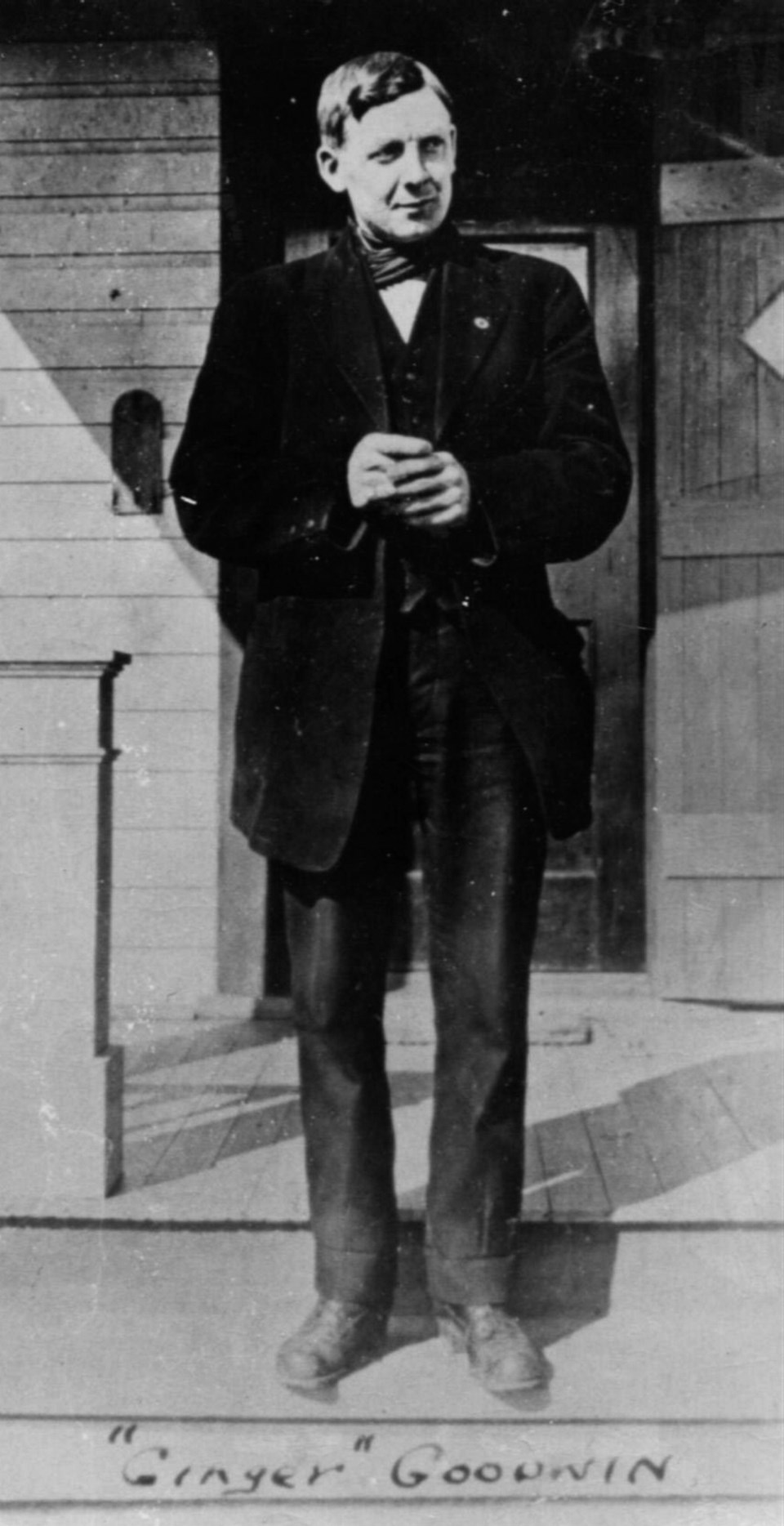 Ginger Goodwin must be a road sign maker’s nightmare.
Ginger Goodwin must be a road sign maker’s nightmare.
One day his name was plastered on a stretch of up-Island highway, the next it disappeared faster than Kevin Spacey.
Now — like the ball in a game of ideological Ping-Pong — the Goodwin name is coming back. The Transportation Ministry confirms highway signs honouring the labour legend are to go up again on the centennial of his controversial death.
Ah, but much was controversial about Goodwin, a man whose place in the history books depends on who’s writing them.
Albert (Ginger) Goodwin was a labour leader, a fiery socialist whose name resonates particularly strongly in places like Trail, where he led a strike at Cominco in 1917, and Cumberland, where he took on the coal barons.
Cumberland is also where he was buried after being killed in the nearby forest in July 1918. The 31-year-old had taken to the Vancouver Island woods rather than be conscripted into the army during the First World War, a conflict he regarded as a fight among capitalists.
Goodwin was shot dead by a special constable, a Victoria hotel owner deputized to track him down. The constable claimed self-defence, but few in the labour movement believed him. In Vancouver, a one-day general strike, Canada’s first, ensued.
Goodwin gained martyr status.
That might have been his legacy — revered inside labour circles but largely unknown outside them — were it not for a tug of war between B.C.’s New Democrats and Liberals.
It was the NDP government of Glen Clark that in 1996 decided to designate an 11-kilometre stretch of the Inland Island Highway as Ginger Goodwin Way. This was done at the behest of the organizers of Cumberland’s Miners Memorial Day, an event dedicated to the 295 miners who died in the community’s collieries.
Alas, no one asked Cumberland village council, which wasn’t thrilled about celebrating what some saw as a draft-dodging rabble-rouser who got himself killed by the authorities.
In 1999, council suggested renaming the route Miners Way as a more politically palatable alternative.
As might be expected, the NDP government embraced this request with all the enthusiasm of a man entering the proctologist’s office.
Gordon Campbell’s Liberals, on the other hand, couldn’t wait to pull down the road signs after being elected in 2001. They didn’t bother with the Miners Way replacement, either.
They might have been better to leave well enough alone. As Saturday Night Live and the author of that Fire and Fury book about Trump’s White House can attest, nothing kindles popularity like censure from the powerful.
Stickers reading ‘’Ginger Goodwin Way’’ magically appeared over Cumberland’s Dunsmuir Avenue signs — the implicit message being that Goodwin was more worthy than the mine-owning Dunsmuirs, reviled for their treatment of their workers. In Trail, a more Ginger-friendly municipal council named a street Goodwin Way in 2004. Punk music legend Joe Keithley campaigned for a national holiday in Ginger’s honour. “Ginger lives,” read the mouse pad of Roger Stonebanks, author of Fighting For Dignity: The Ginger Goodwin Story.
This Monday, Cumberland council (yes, the same body that wanted the signs changed 19 years ago) voted to begin the process to rename part of Minto Road — the piece that goes past the cemetery where Goodwin is buried — as Ginger Goodwin Way. The change would affect only one other address, a business that supports the idea, says Mayor Leslie Baird.
The hope is to change the name in time for the big Miners Memorial Weekend planned for June 22-24 (the agenda includes the “laying of fair-trade flowers on Ginger Goodwin’s grave” and a re-enactment of his funeral procession).
That’s also the weekend that the Transportation Ministry — the minister is North Island MLA Claire Trevena — plans to put the Goodwin signs back on Highway 19 (though the section to be dedicated has yet to be pinpointed). As always, it’s the victors who write history, to decide whom to celebrate. (Across Menzies Street from the legislature sits an NDP-backed, privately financed memorial to the Canadians who fought in the Spanish Civil War. When Stephen Harper got the boot, so did the political oomph behind a plan to build a Conservative-backed, privately financed Victims of Communism monument across from the Supreme Court in Ottawa.)
The obvious question: If the B.C. Liberals return to power, will they pull down the signs again? How long can this Ping-Pong game go on? At some point you have to decide that historical figures are just that, and can’t be spun out of fashion as quickly as Employee of the Month.



